 Leading Blog | Posts by Month |
 Leading Blog | Posts by Month |
02.28.22

LeadershipNow 140: February 2022 Compilation
See more on
Posted by Michael McKinney at 08:22 AM
02.26.22

What Would They Look Like If They Lived Today?
Hidreley Dião created a series transforming historical figures into contemporary-looking people. He asked, “What if they lived in these days?” He says the most time-consuming part is finding an image that resembles the historical figure. He says, “I spend hours in image banks until I get it.” He uses Artbreeder, Photoshop, and FaceApp. Each image takes about 2 hours to create. You can find his work on Instagram
Posted by Michael McKinney at 05:51 PM
02.24.22

Leading Thoughts for February 24, 2022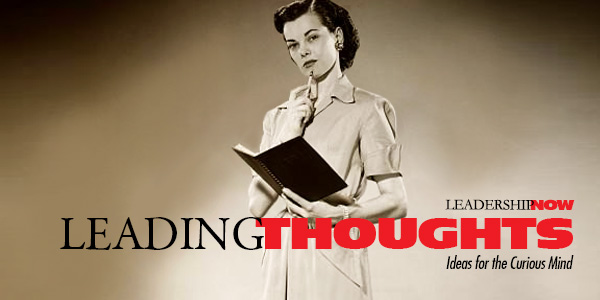
IDEAS shared have the power to expand perspectives, change thinking, and move lives. Here are two ideas for the curious mind to engage with: Former CEO of Best Buy, Hubert Jolly, on the value of more decisions to keep moving forward: “A good plan is all we needed to create momentum and hope and get people engaged. Making decisions fast—like matching online prices and reinstating the employee discount—was crucial. It boosted people’s energy and created a sense of possibility and hope. What separates great leaders from good leaders is not the quality but the quantity of decisions. More decisions create more momentum and energy. These decisions will not all be good ones. But if you know how to ride a bicycle, then you know that it is much easier to correct course when you pedal your way forward than when you stand still.” Source: The Heart of Business: Leadership Principles for the Next Era of Capitalism Michael Mauboussin writes that how you improve your skill depends on where the activity lies on the continuum between pure luck and pure skill: “In cases where there is a clear relationship between cause and effect, and in activities that are stable and linear, deliberate practice is the only path to improvement. For activities near the luck side of the continuum, a good process is the surest path to success in the long run. Accurate feedback is essential no matter where you are on the continuum. Improving your skill means constantly looking for ways to change your behavior, either because what you’re doing is wrong or because there’s a slightly better way of doing it. No matter what your profession or level of expertise, the chances are very good that accurate feedback can improve your performance.” Source: The Success Equation: Untangling Skill and Luck in Business, Sports, and Investing Look for these ideas every Thursday on the Leading Blog. Find more ideas on the LeadingThoughts index.
Posted by Michael McKinney at 07:32 AM
02.23.22

Crisis Communications: Not If, but When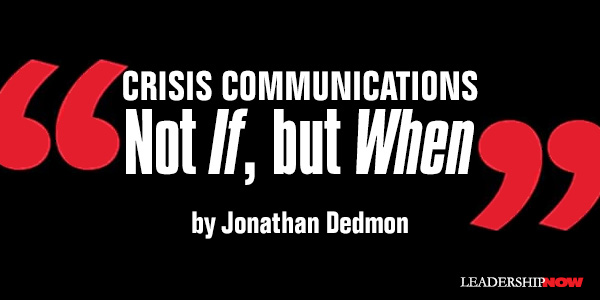
You never want a serious crisis to go to waste. THE quote above is from former Chicago mayor Rahm Emanuel, who was President Barack Obama’s chief of staff during the 2008–2009 economic crisis and Great Recession. However, similar comments go at least as far back as Italian diplomat, philosopher, and writer Niccolò Machiavelli in Renaissance Florence. Of course, no one and no organization wants a crisis, but inevitably one will happen. Crises come in all shapes and sizes, but generally share several attributes:
As the late management guru Peter Drucker noted, “Turbulence—for those who still remember a little mathematics—is characterized by unpredictability. It is certain that the unpredictable will happen; but it is impossible to predict where, when or how.” So it is with crises. While no organization can avoid turbulence at some point, it can keep its seat belt fastened and be prepared BEING PREPARED The Team The first step is to establish a core team that can manage crises effectively right when they occur. The team should include:
Depending on the nature of the crisis, the team should be expanded to include appropriate senior executives. They could include the following leaders and department heads:
However, it should not be too large. More than ten people is too large. Identify and notify the core members of the team, and hold a meeting before any crisis occurs. A word about legal counsel. Counsel can be expected to ably assess the legal risk of the crisis and suggest specific actions to address it. Almost inevitably, the plaintiffs’ bar will file lawsuits for millions and even billions of dollars in damages on issues ranging from company products being linked to cancer to violations of securities laws over the nature and timing of disclosure of the issue. You must realize, too, that there is also what could be called “brand risk” involving a range of organization stakeholders that can be extremely important to the overall strategy. For instance, corporate boycotts over specific company policies, while generally not that successful by themselves, can and do generate significant negative media and public attention that leads to change. Boycott examples have included Chick-fil-A for its opposition to same-sex marriage, Caterpillar for selling construction equipment to Israel that was used to bulldoze Palestinian homes, and products from South Africa over apartheid. Two of the most famous boycotts:
Boycotts demonstrate the need for companies to do the right thing in the first place Taking Inventory Before a crisis hits, the first task for the core team is to take inventory of the type of crises that have occurred in the organization’s past and that might occur in the future, given its business. For instance, for an oil company it could be a major oil spill, such as the Exxon Valdez tanker off the coast of Alaska or the Deepwater Horizon oil platform explosion in the Gulf of Mexico, causing severe environmental damage and, in the latter case, deaths. For a food company, it could be contamination of its products, either with a foreign substance or a pathogen such as E. coli, necessitating a massive product recall. Perrier’s market leadership in mineral water in the US was decimated when trace amounts of benzene, a carcinogen in significant quantities, was found in some of their bottled water. For a clothing company, it could be a major human rights organization exposing dangerous working conditions or child labor in a developing country. More than a thousand workers perished when a Bangladesh factory producing Nike products collapsed. The Plan Using the inventory, compose a written plan—in advance. Make it only a few pages, not a long document that likely will then sit on a shelf. It should include:
Organization and Logistics As noted, the crisis team needs to have a logistics plan in place for communications—and for everyone to understand it. This should have a number of pieces, including but not limited to:
There are many more. 

Posted by Michael McKinney at 08:09 AM
02.21.22

First Friends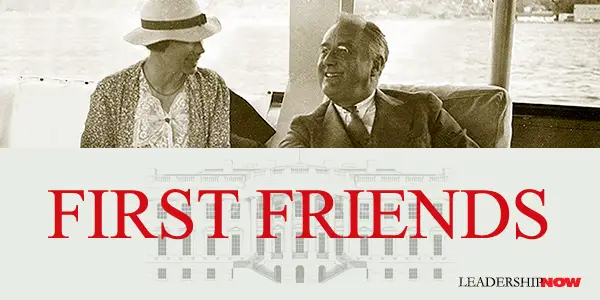
FRIENDSHIPS make a difference in the trajectory of our lives. Our friends can help shape who we are because they affect our choices and thus the paths we follow. It’s no different for people in power. Gary Ginsberg reports on the friendships that made a difference in the lives of nine of the presidents of the United States in First Friends: The Powerful, Unsung (And Unelected) People Who Shaped Our Presidents. When vetting Al Gore for the potential VP spot, Ginsberg came into contact with LBJ’s White House lawyer and chief speechwriter Harry McPherson. McPherson’s overriding concern was, “Does he have any friends?” People he can relax with, have drinks with and share the issues with. Reflecting on his time spent with Johnson, McPherson “recognized that there was a gaping hole in Jonhson’s life, one that could have been filled with a friend who might have enabled him to be a more successful president. Over his long agonizing debate over Vietnam, for example, Harry had theorized an intimate could have helped clarify his thinking and eased the pressure as the country divided over the war and ultimately forced his early retirement.” A presidential friend may not be essential to their success, but it does say something about them. McPherson concluded, “If he can’t develop or even claim one real friendship, how’s he going to lead a nation?” Ginsberg explores the relationships and the impact they had between:
Most of the presidential friends were content with staying in the background and just being a friend, which made them so valuable as friends. Their friendship didn’t depend on political office or a personal agenda. They often provided the Yin to their Yang: “For Jefferson to be Jefferson—big thinking and idealistic to the max—he needed as his stabilizer and actualizer the more practical, cautious Madison.” They made them better: “Jackie loved in Jack the man he wanted to be, and David was the man helping him, in her eyes, to be the man Jack wanted to be.” Sometimes they were just a sounding board, there to listen while they worked through their thoughts. Ginsberg writes, “those presidents who did have First Friends were almost always the better for it—and so was the country.” And we are too. We all need some First Friends. 
Posted by Michael McKinney at 07:14 PM
02.18.22

Impact Players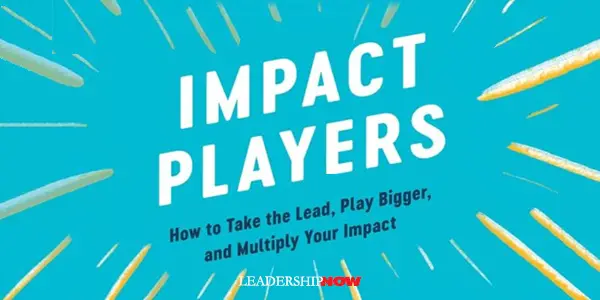
MOST people are contributors and do quite well at it. Then there are the few that are Impact Players. Which one are you? Could you have greater influence and impact? The difference between the two is in the way they work, and that determines their level of contribution, influence, and thus their impact. If we are just doing what we are told to do and looking out for ourselves, we are living beneath our potential. In business and in life, how we approach everything we do makes a huge difference regarding the impact we have on others. Liz Wiseman’s book Multipliers focused on the impact leaders have on someone’s ability to contribute. But that’s only part of the equation when it comes to making an impactful contribution. The other part is the contributor’s role. How does one become a top contributor—an impact player? We all want to contribute in meaningful ways and make an impact. To do this, we must have the right mindset. In Impact Players, Liz Wiseman shows us how. Impact Players are those who “make a significant contribution individually but who also have an enormously positive effect on the entire team. There’s also their mental game: how they view their role, work with their managers, and deal with adversity and ambiguity, and how willing they are to improve.” The fundamental difference between contributors and Impact Players is the way they respond to ambiguity and uncertainty and the everyday struggles in the workplace like problems without clear owners, unclear roles, unforeseen obstacles, moving targets, and unrealistic workloads. The Five Practices of Impact Players There are five practices that set Impact Players apart from contributors, as summarized in the chart below.
1. Do the Job That’s Needed. While others do their job, Impact Players do the job that needs to be done. Contributors see themselves as position holders. They do the work they’re given and stay within the boundaries of their role but risk becoming so myopic that they lose sight of the overall strategy and veer off the agenda. Impact Players have an awareness to see what needs to be done without being asked. They know what is valued by the organization and know what it takes for the organization to succeed. Having an overall view, they fulfill their role but play outside it too. Wiseman recommends, “Don’t just update others on your work; find out how their priorities are shifting so you can stay on top of the agenda.” 2. Step Up, Step Back. While others wait for direction, Impact Players step up and lead. Leadership is needed at all levels of an organization. Impact Players practice on-demand leadership. They step up when needed and step back when the task is completed. Impact Players take charge of situations that lack leadership. When they see an opportunity for improvement, they don’t wait for permission to act. They step up, volunteering to lead long before higher-ups in the organization ask them to do so. They are disruptors of the status quo who choose to lead rather than let things be. They offer a higher value proposition; instead of just carrying out the boss’s direction, they can also rally others. Wiseman adds, “The real key to not overstepping our authority or stepping on toes is to be willing to step back when our work is done and showing our colleagues that we can get behind them when it’s their turn to step up and lead.” 3. Finish Stronger. While others escalate problems, Impact Players move things across the finish line and build strength along the way. Impact Players offer a low-maintenance, high-accountability proposition: they take ownership, anticipate and wrestle down problems, and do what it takes to complete the job. Persistence allows you to move forward even in the face of ambiguity. When they need help, they call on reinforcements without relinquishing accountability. And they deliver—every time. 4. Ask and Adjust. While others attempt to manage and minimize change, Impact Players are learning and adapting to change. Small adjustments are always needed to stay on track. “The most valuable players are never finished. They are continually adapting, adjusting to hit the mark. When targets are continually moving, you need continual feedback, guidance, and correction so you can adjust your aim.” Feedback as information, not criticism. “The critical skill isn’t what you know but how fast you can learn.” Impact Players were able to adapt because they were confident in their ability to learn. But they were also comfortable enough with themselves that the prospect of failure—and inherent risk of learning—didn’t compromise their self-worth. It is a posture of confidence—the belief that I have value that can grow and evolve. 5. Make Work Light. While others add to the load, Impact Players make heavy demand feel lighter. Impact Players create a positive and productive work environment for anyone on the team—including themselves. Impact Players are quick to lend a hand and bring levity to stressful situations. Importantly, each one of these practices come with Safety Tips—emotional intelligence, if you will—that are valuable as you begin to develop these practices. The many examples found in the book help to see how others perform as Impact Players. You don’t need to master all five, Most Impact Players in their study usually exhibited three or four of the five practices. Where Do We Start? Becoming an Impact Player is a matter of adopting a new mindset. We begin by focusing on two master skills that all Impact Players seem to possess. First, we learn to see situations and issues through the eyes of the people that are served by our work—seeing the needs of others. And secondly, we view ambiguity and uncertainty as an opportunity, not a threat. We change the lens through which we see the world. When we use a threat lens, we become myopic: we look inward, consider the situational aspects, and tend to see ourselves as standing alone, lacking control or organizational backing. Wiseman writes about how to create a team of Impact Players and what behaviors and beliefs are the most and least coachable. Valuable information. Finding Meaning in Your Work If you are looking to find meaning in your work, the path to becoming an Impact Player that Wiseman lays out here is your answer. Being an Impact Player is about having an other-awareness. Along the way, some people have gotten the impression that meaning is something a leader gives you or an organization fills you with because of their mission. Meaning has become a right and someone else’s responsibility. Certainly, leaders can create a nurturing environment that facilitates the individual’s creation of meaning, but meaning comes from inside you. It’s personal. Working with initiative and enthusiasm is a decision you make regardless of the events unfolding around you. Ironically, while meaning is developed on the inside, it is not present in the self-absorbed mind. Meaning is derived from your impact and influence with the people around you. To do that, you need to think outside yourself. It doesn’t matter—and it has never mattered—where you work or what you do. If you apply the mindset of an Impact Player at work or in your personal life, you will find meaning in your life. Impact Players was a 2021 Best Leadershp Book of the Year for a good reason. The ideas presented here are critically important for leadership and influence. 
Posted by Michael McKinney at 10:21 AM
02.17.22

Leading Thoughts for February 17, 2022
IDEAS shared have the power to expand perspectives, change thinking, and move lives. Here are two ideas for the curious mind to engage with: Dov Seidman on why organizations can compete through culture: “Culture can’t be copied. The collective experience of any group of people forms a unique narrative, a story that lives and breathes in the halls, offices, and factories of that enterprise. The way people connect, spark against one another to create new ideas or refine old ones, solve problems, and overcome adversity build the synapses that make an organization thrive or die, and no two groups conglomerate these experiences alike. Each is as unique as any family; the number of children can be the same but the ties that bind them will always be unique. Because of this singularity, culture, as an expression of the collective hows of a group or enterprise, gives us our greatest opportunity for differentiation.” Source: How: Why HOW We Do Anything Means Everything Forrester's Law: “In complicated situations efforts to improve things often tend to make them worse, sometimes much worse, on occasion calamitous.” Source: MIT Sloan Professor Emeritus Jay W. Forrester quoted in The Conservative Intellectual Movement in America Since 1945 by George H. Nash Look for these ideas every Thursday on the Leading Blog. Find more ideas on the LeadingThoughts index.
Posted by Michael McKinney at 09:20 AM
02.16.22

Coaching Your Employees for Influence and Impact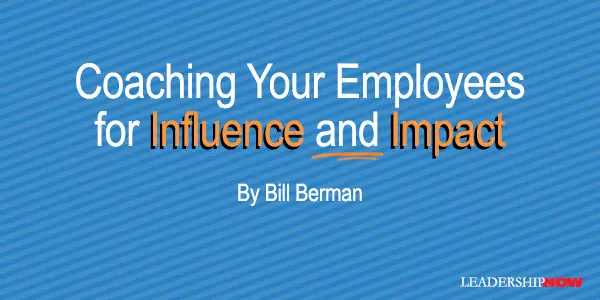
WHETHER you are a leader of a small team or the leader of a whole business, one of the key roles for any manager is the same. For you to be successful, your people—one, ten, or ten thousand—need to be successful. Our guidance in Influence and Impact: Discover and Excel at What Your Organization Needs from You the Most is intended to help you with your direct reports or your skip-level reports (one layer down). As Elizabeth Ling Decitre said to me, “After 23 years of work…when I look back…what I remember and get the most joy from [is] the team members I have helped finding the right career track or helped to get more pay for their great work, or conversely, those fewer I have pushed gently to find a more suitable career. Each time, it was a lot of time and intense discussions, but it was always worth it.” The same guidance applies even if you are focused on someone deep in your organization. Help them to understand what the job entails and what the culture expects so that they can do the work you need from them the most. Our fundamental premise is consistent throughout the book: Many people who are struggling in their job are not focused on the most essential, mission-critical business and cultural priorities that give them the most influence and impact. They may not even be aware of what those are! This drives how they spend their time, how they think about their job, and how they do that job. And just as important, the way they do their job is inconsistent with the culture and mores of your organization. How managers can help their people is a book in itself. What follows are a few points from our chapter for leaders: Some bullet points on how you can help your people excel and shine, to your benefit, and your organization’s benefit. Most of what we are describing in this chapter can be summed up as “Coach more than supervise.” Managers acting as coaches to their team members is first and foremost an act of respect, which engenders respect. It is a core behavior of a high-performing executive. It is how you help others evolve, using your confidence in them to bring out their best:
Remember that leaders and managers succeed when their people are engaged, empowered, and focused. Helping your team members develop their influence and impact is the best way for you to expand your own influence and impact. The time devoted to helping them will return your investment multiple times over.  
Posted by Michael McKinney at 07:59 AM
02.14.22

Corruptible: Who Gets Power and How It Changes Us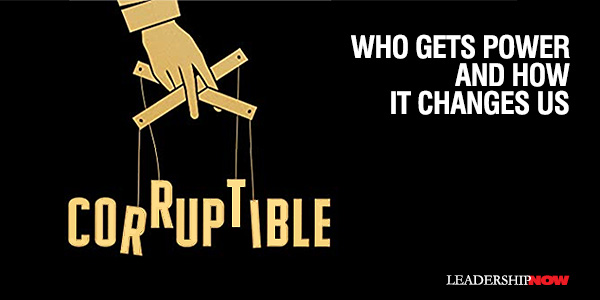
DO worse people get power? Does power make people worse? We’ve all heard Lord Acton’s words lifted from a letter taking Bishop Creighton to task for his indifference to the torture and execution of innocents: “Power tends to corrupt, and absolute power corrupts absolutely. Great men are almost always bad men.” Thomas Jefferson Jefferson held a similar view. Writing to a friend, he observed, “Whenever a man has cast a longing eye on [office], a rottenness begins in his conduct.” Power does indeed corrupt. But as Brian Klaas states in Corruptible, “our overly cynical view of how much power corrupts is wrong. Some of that has to do with four phenomena that are too often overlooked when we praise or condemn authority figures. I call these four phenomena dirty hands; learning to be good at being bad; opportunity knocks; and under the microscope.” Dirty Hands What happens when an unbearable choice has to be made? Sometimes people in power, when faced with two bad choices, try to choose the lesser evil. The dirty hands problem skews our evaluations of leaders by making them appear worse than they actually are. When we say “power corrupts,” we mean power makes people worse than they previously were. Instead, much of the time, they just have to make worse decisions, which isn’t the same. Learning to Be Good at Being Bad Bad people learn over time how to get better at being bad. Power didn’t make them bad. They have always had questionable character. Learning is an integral part of getting power and holding on to it. That creates a misperception. If you analyzed the data, it would appear as if someone were getting worse over time—that power was corrupting them. In fact, their bad intent may have been static while their effectiveness increased. They were always corrupt. They just got better at it. Opportunity Knocks Give someone power, and they have more opportunity to do harm and to more people—the consequences are greater. Just because someone doesn’t have the opportunity to do harm doesn’t make them virtuous. Our intuition is to determine who the “bad people” are by how often they do bad things. We make those judgments without any reference to how often an individual faced with an easy opportunity to behave badly and hurt other people. That’s a particularly relevant insight for people in power, because being put in a position of authority necessarily produces more frequent—and more consequential—opportunities for wrongdoing. Under the Microscope Those in power are scrutinized more than those with less power. No news flash there. But it skews how we view those in power—and those who are not. Sometimes, the rich and powerful can use their considerable resources to divert that gaze, or to disguise abuse or crimes as legitimate activity. But much of the time, seemingly worse behavior by those in power can be chalked up to an exploration that we consider less often: they’re simply more scrutinized than the rest of us. Nevertheless, most studies find that power makes us worse. One study called the “dictator game” found that as power increased, so did selfish behavior. Before the dictator game was played, they asked participants how a leader should behave in a situation in which they’re tasked with sharing resources. As you’d expect, most said that a leader should be magnanimous and share fairly with others. Yet, when they soon found themselves in a leadership position faced with that exact choice, only half of the people in the low-power group actually behaved as they said a leader should. In the high-power group, only one in five stuck to their stated principles and shared fairly. Power doesn’t just corrupt, it also makes you more of a hypocrite. Then there is the Dark Triad: Machiavellianism (the end justifies the means), narcissism (self-absorption, arrogance), and psychopathy (lacks empathy, is impulsive, reckless, manipulative, and aggressive). We probably all have a little of this inside, but at the far end of the continuum, we have much more than control freaks. We have tyrants and dictators who act their whims with abandon. Psychopaths, the darkest of the Dark Triad, can blend in. “The psychopaths in the boardrooms are the intelligent ones who figured out a way to control themselves as they sought to control others.” They are “drawn to power and are better at getting it.” And they are rare. Fortunately, as Klaas shows, most bosses don’t peg the needle on the Dark Triad needle. Since all of the available evidence points in one direction—“becoming powerful makes you more selfish, reduced empathy, increases hypocrisy, and makes you more likely to commit abuse”—why then do we let people control us that have no business being in power? And how do we keep them out? Klaas offers ten prescriptions to this problem from improving our recruitment process, better oversight, rotation of leaders, to reminding them of their responsibilities, and the most effective tool of all, stop waiting for principled saviors—make them instead. You may remember the story of Cincinnatus. As the legend goes, The Roman army was surrounded. The country was in need of a leader who would seize the moment and turn the situation defeat into victory. They called upon a man who was out plowing his field, a farmer. He came. He saw. He conquered. He went home. Cincinnatus gained fame for his selfless devotion to his country. This half-legendary hero of the Roman Republic gave his all in a time of crisis and then gave up the reins of power when the task was done and went back to his plow. George Washington did the same thing over two thousand years later. After two terms as president, he refused to continue and returned to Mount Vernon. Neither man sought power, and perhaps that is why they were able to use their power wisely. Instead of waiting for our principled saviors to leave their farms, a more realistic goal is to change our systems to make ordinary people behave like Cincinnatus: answering the call to power rather than seeking it, and relinquishing control rather than relishing its intoxicating effect as it corrupts. Incorruptibility requires a character that we don’t see too often in our most visible leaders. It is not encouraged by social media, taught at schools, or in many homes. But that is the path for making power a tool for good for all. If we understand power, we know that we all have to potential to abuse it. That alone should temper our tweets when we want to attack someone who disagrees with us. Otherwise, we fall into the same trap we are condemning. Our stubborn assumptions corrupt our thinking. Fortunately, Klaas manages to avoid that in this exposé on power. As Barbara Tuchman reminds us in The March of Folly, “Chief among the forces affecting political folly is lust for power, named by Tacitus as ‘the most flagrant of all the passions.’ Because it can only be satisfied by power over others, government is its favorite field of exercise.” 
Posted by Michael McKinney at 08:26 AM
02.12.22

All You Need to Know About Bitcoin 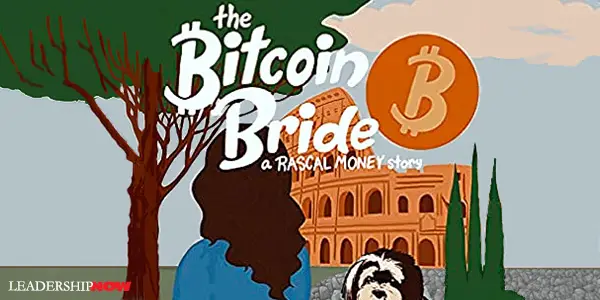
IF YOU have ever wondered what Bitcoin and blockchains are all about, look no further that Chris Brady’s The Bitcoin Bride. (Chris Brady is the coauthor of the New York Times bestseller, Launching a Leadership Revolution: Mastering the Fives Levels of Influence.) The Bitcoin Bride tells the story of two young lovers, Marcus and Cassandra. He wants to surprise her with a marriage proposal, but first, he wants to seek the blessing of her father, Giulio, in Italy. So off they go to her home town, Grottaferrata, Italy. When he brings up the topic, Giulio informs him that although he ticks all of the boxes, he will give him his blessing “if and only if, in the remaining two weeks you are here, you convince me, and explain Bitcoin and how it works and that it is a good idea.” Marcus had put his education on hold to join a startup Bitcoin mining operation. So enlisting his knowledgeable friends, he begins to explain to Giulio the what, why, and how of Bitcoin. And Giulio has many questions. First, Marcus lays out the foundational issue that Bitcoin is designed to fix: The first step in all of this is to realize money is broken. It is centralized in the hands of governments and banks who serve themselves at the expense of the people. What makes all of this possible is the fact that fiat money is disconnected from anything of value, and its supply is strictly under the control of governments who want and need to spend it, and banks who want and need to lend it. He then explains how it was created and how it works, the mining of Bitcoin, security, and investing. I have to share one remarkable story that Brady tells about the early days of Bitcoin. Bitcoin was released in January of 2009, but soon it had developers deliberating about its actual value. Well, it wasn’t long before they began wondering what they could buy in the real world. On May 22, 2010, a day that will forever after be referred to as “Pizza Day” in Bitcoin folklore, a Bitcoin enthusiast in the United States named Laszlo Hanyecz decided to try an experiment. He went on a Bitcoin talk forum and said that he would pay 10,000 bitcoins to anyone who would deliver to him two large pizzas. He said he didn’t care if the person made t himself or ordered it from a local pizza joint. Interestingly, a man in England took him up on his offer and made a phone call to the Papa John’s pizza shop located near Hanyecz. Two large pizzas were delivered, and Hanyecz then transferred 10,000 bitcoins across the Bitcoin network to the sender of the pizzas. Those bitcoins are worth hundreds of millions of dollars today. The Bitcoin Bride is a fun and very informative book. All of the pros and cons you’ve ever heard are covered in this book, including much of the misinformation regarding speculation, bubbles, and the dark web. As a bunch of rascals started Bitcoin, it makes me think I should read Chris Brady’s other book, Rascal: Making a Difference by Becoming an Original Character, next!

Posted by Michael McKinney at 05:46 PM
02.11.22

The Power of Regret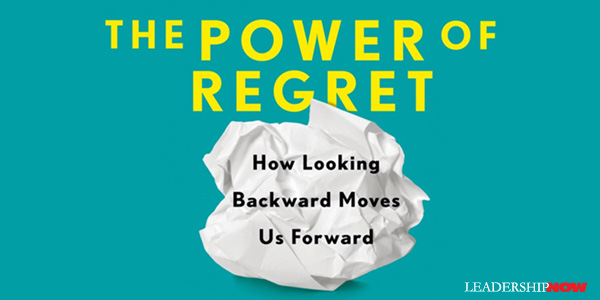
WE must be clear. Bad choices lead to regret. We don’t want regrets. But regrets themselves are not bad. And they can lead us to better choices. In that sense, they have the power to change our life. In The Power of Regret, Dan Pink claims, “Regret is not dangerous or abnormal, a deviation from the steady path to happiness. It is healthy and universal, an integral part of being human. Regret is also valuable. It clarifies. It instructs. Done right, it needn’t drag us down; it can lift us up.” That’s good. Consequences clarify. Anyone who says they have no regrets is in denial. It is very human to make poor choices and regret them. We also make good choices that we should celebrate. Poor choices do derail our hopefully steady path to happiness. When we do make poor choices and feel regret, it is Pink’s wish that we deal with it constructively to “make better decisions, perform better at work and school, and bring greater meaning to your life.” The Power of Regret is a path to a better and more intentional life. Hindsight creates regret or what is termed counterfactual thinking—“If only I....” Finding what you can be thankful for if the situation could have turned out worse than it did—gratitude—can lead to the thought, “At least... .” (“At Leasts don’t alter our behavior or boost our performance in the future, but they do help us reassess the present.”) What Can Regret Do For Us? Sometimes we just can’t stop ourselves even though we know better. We just keep digger the hole we’re in deeper. A London Business School study found that “getting people to think about a previous escalation of commitment, and then to regret it, decreased their likelihood of making the error again.” Not surprising. Pink finds three broad benefits to regret when handled correctly: 1. Regret Can Improve Decisions Learning from regret helps us is makes us stop and think. They slow us down. “We collect more information. We consider a wider range of options. We take more time to reach a conclusion.” We need the ability to regret our poor decisions—to feel bad about them—precisely so we can improve those decisions in the future. 2. Regret Can Boost Performance If we take the time to think about what and how we did, we can often improve our performance next time. Even reflecting on what other people have experienced can improve our own choices and outcomes. To be sure, regret doesn’t always elevate performance. Lingering on a regret for too long, or replaying the failure over and over in your head, can have the opposite effect. 3. Regret Can Deepen Meaning Sometimes asking ourselves “What if” can lead us to a greater appreciation of what we did or didn’t do. “Conducting a ‘midlife review’ focused on regrets can prompt us to revise our life goals and aim to live afresh.” But as Pink observes, we often don’t handle our regrets properly. The feelings surrounding regret can be handled in three ways: ignore them, overindulge them or think about them. It has to do with our philosophy on what feelings are for. If we think feelings should just be ignored and dismissed, we just delay facing the emotions we have locked up inside. If we think that feelings are for feeling—to be indulged—then we run the risk of rumination and regurgitating past mistakes that impedes growth. On the other hand, if we believe feelings are for thinking, we face them and use them for improving future behavior.
Framing regret as a judgment of our underlying character—who we are—can be destructive. Framing it as an evaluation of a particular behavior in a particular situation—what we did—can be instructive. Suppose you forgot a loved one’s birthday. A regret about being a clueless, uncaring person won’t help. However, if it is a reoccurring regret, it’s probably is a character issue. Pink identifies and discusses four core regrets: foundation regrets (our failure to be responsible, conscientious, or prudent), boldness regrets (the choices we didn’t make), moral regrets (when we behave poorly or compromise), and connection regrets (neglecting relationship). We have regrets of action (things we did) and regrets of inaction (things we wish we did). Pink informs us on how to be deal with each kind. We can also use the specter of regret to alter our behavior before the fact and avoid regret altogether. This is also known as counting the cost and thinking actions through to consequences. Anticipating our regrets slows our thinking. It applies our cerebral brakes, giving us time to gather additional information and to reflect before we decide what to do. Anticipated regret is particularly useful in overcoming regrets of inaction. But anticipated regret can cause us to overthink, resulting in decision paralysis and risk aversion. Interestingly, Pink shares studies that show that overthinking regret can increase our sensitivity to regret—“both experienced and anticipated.” They had regrets “before they made their choices. After they made their choices. While they made their choices. Whatever the situation, they always imagined the possibilities of something better if only they had acted accordingly.” This doesn’t lead to the productive feeling is for thinking regret response. What is the solution? “Our goal should not be to always minimize regret. Our goal should be to optimize it. To make it clearer, Pink offers the Regret Optimization Framework, which leads us to devote our time to only the four core regrets. Pink concludes: “Regret makes me human. Regret makes me better. Regret gives me hope.” 
Posted by Michael McKinney at 09:13 AM
02.10.22

Leading Thoughts for February 10, 2022
IDEAS shared have the power to expand perspectives, change thinking, and move lives. Here are two ideas for the curious mind to engage with: Alan Deutschman on the effects of walking the walk: “When you walk the walk, you reveal the ranking of your values. Martin Luther King Jr’s actions showed that nonviolence was his paramount value for the movement he led. Although he sought many important things for black people in America—equality, respect, power, prosperity—he wouldn’t sacrifice nonviolence to achieve any of them. Nonviolence was nonnegotiable. It was number one.” Source: Walk the Walk: The #1 Rule for Real Leaders Thomas Sowell on intellectuals: “It may be expecting too much to expect most intellectuals to have common sense, when their whole life is based on their being uncommon—that is, saying things that are different from what everyone else is saying. There is only so much genuine originality in anyone. After that, being uncommon means indulging in pointless eccentricities or clever attempts to mock or shock.” Source: Ever Wonder Why? and Other Controversial Essays Look for these ideas every Thursday on the Leading Blog. Find more ideas on the LeadingThoughts index.
Posted by Michael McKinney at 09:11 AM
02.09.22

Change: How Organizations Achieve Hard-to-Imagine Results in Uncertain and Volatile Times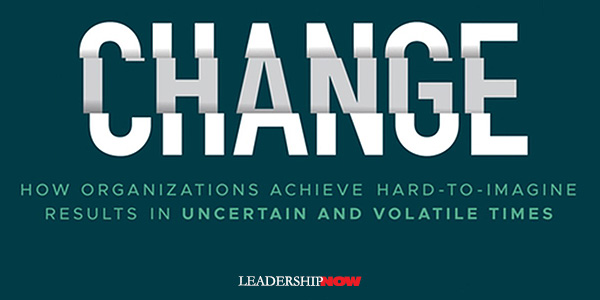
BRAIN science has added much to our understanding of human nature and change in the last decade or so. In Change, John Kotter (with Vanessa Akhtar and Gaurav Gupta) notes that we “tend to seriously underestimate the power of our built-in survival instinct and how it can inadvertently overwhelm our capacity to swiftly see opportunities, innovate, adapt, lead, and change for the better.” Consequently, “A gap is clearly growing between the amount of change happening around us and the change we are successfully, smartly implementing in most of our organizations and lives.” Basic to our human nature is our survival instinct that is always on the lookout for threats. Kotter calls it the Survival Channel. When dealing with life and death threats, it is very valuable. When activated, it releases chemicals (cortisol and other hormones) that eventually drain us of energy and create stress. But most of the perceived threats we see today are dealing with the complex change we see around us. We need a better response because our typical survival response causes us to freeze and overwhelms our capacity to see opportunities. With the complex realities we see today, we need to awaken what they call the Thrive Channel. This channel too, when activated, releases chemicals like oxytocin and vasopressin that make our energy go up and produces emotions like passion and excitement. In this state, our perspective broadens as we become more curious.
A basic reality today is that the way to create enough smart change at a fast enough speed is both to prevent the Survival Channel from overheating and to activate the Thrive Channel across a sufficient number of people. It makes sense then to include as many people as possible to drive change faster and smarter. In the research for this book, they found that an insufficient sense of urgency causes change efforts to fail. “Problems were exacerbated when too small a group, lacking broadly relevant knowledge, connections throughout the organization, leadership skills, and/or a strong sense of urgency was put in charge of driving complex change.” But the burning platform approach is not the answer. It tends to lead to a Survival Channel panic. Activating Thrive requires people to see opportunities and not just threats, and if those people do not have some engagement as the plans are being formulated, the Survival Channel’s natural fear of the unknown kicks in. Research and experience have shown us that there are better ways to accelerate change. They take seven chapters to explain change principles and methods as they relate to strategy execution, digital transformation, restructuring, culture, mergers and acquisitions, sustainable agility, and driving social change. The bottom line of all this is that we need more leadership from more people throughout the organization. “Thrive hardwiring is closely connected to leadership. And with too much Survive easily shutting down Thrive, an overabundance of Survive is typically associated with a lack of leadership.” We need to encourage leadership from everywhere. As we tend to focus on threats rather than opportunities, we can help to activate Thrive by having more conversations about opportunities rather than problems. Some additional thoughts: If your Thrive is not adequately engaged, you can trigger it by reflecting on opportunities that are both real and personally exciting or meaningful (or both). Focusing on the opportunities to learn and develop and thinking concretely about the role you can play will also help activate Thrive. 
Posted by Michael McKinney at 10:05 AM
02.07.22

Smart Growth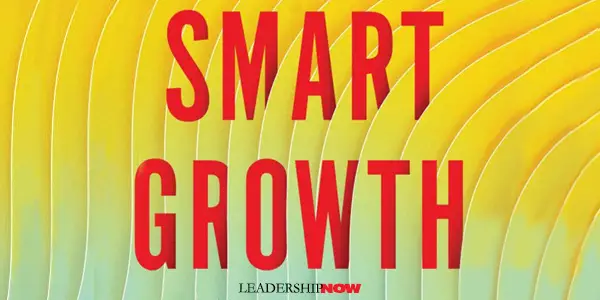
WHILE growth is never easy, we are at our best when we are growing. And the more we grow, the more we are capable of growing. It would make sense then that we are intentional about it. Sometimes we don’t know where to start or get tired or overwhelmed by the effort, but there is a pattern to it that, when we understand it, can help us achieve the growth we seek. In Smart Growth, Whitney Johnson says that “every new skill learned, every challenge faced, takes the form of a distinct learning curve”—an S Curve. Along that curve are six stages of growth whereby we can pinpoint where we are along that curve and prepare ourselves for what to expect and how we should respond. As illustrated in the chart below, there are three phases—Launch Point, Sweet Spot, and Mastery. Each phase has two stages, making up the six stages of growth: Explorer, Collector, Accelerator, Metamorph, Anchor, and Mountaineer. “Each phase of the S Curve of Learning is marked by its own distinctive characteristics, frustrations, and thrills.”
Launch Point At the Launch Point, we are exploring opportunities—new S Curves. We begin at the Explorer stage. Many opportunities will present themselves, but we want to focus on those that will take us where we want to go. This stage will feel slow as we work through the questions we need to ask. For example, Is it achievable? Is it familiar yet novel? Does it align with my values? And Is the reward worth the cost? It’s when you do your homework before committing to a course of action. Not all S Curves lead to where we want to go. Being true to your why results in growth. You are conscious of your life’s purpose; you’re focusing your time and effort in areas that further your purpose. Once we choose a course of action, we become the Collector. We are gathering evidence that we are on the right curve. Again, progress may seem slow here, but it is essential so that as you move into the next phase, you don’t regret it. Sometimes it’s hard to get started. The slow pace at the launch point of a new S Curve can defy us. But if we take time to explore, we will find the right fit. By collecting quantitative and qualitative data and resources—and curating to eliminate the deadweight—we prepare to tip into the sweet spot of momentum. Sweet Spot We now hit the rising slope of the S Curve. The pace becomes faster. “We are gaining confidence that we can become who we set out to be, hope swells as our growth accelerates.” We are now at the Accelerator stage. We are producing more results with less effort. We want to spend as much time of our day working on our chosen S Curve. There are fewer gaps in your knowledge, and you have a good sense of where the remaining gaps lie. You’re making connections, deliberate choices about how you want to grow, and those choices become more automatic as stress and growth approach equilibrium. As you grow, what was once was unfamiliar to you is becoming automatic. You are becoming what you set out to be. You are a Metamorph. This stage is exciting because everything is working; it feels fast-paced compared to the earlier stages, and you are exhilarated by the combination of challenge, productivity, and growth. Similarly, your brain chemistry shifts from the headwinds of stress response to providing supportive dopamine rewards as your predictive model improves. Mastery At the top of the S Curve we have accomplished what we have set out to do. The new you is the new normal. We are now in the Anchor stage. It’s time to reflect and celebrate. Things slow again. The Anchor stage is a brief season of rest and reflection before you take the next leap. With your celebration complete, outline what you’ll do next. Is now the time to reconsider compelling opportunities you turned down to stay focused. Are you drawn toward a radically different S Curve such as a career pivot or a move? Anchoring gives you stability and confidence. Chart your next steps from this point of strength. At the top of the learning curve, you are a Mountaineer. Once you reach the summit, it’s time to find the next mountain to climb. It was hard work to reach the top, but it’s time to find a new adventure—a new launch point. Learning is the oxygen of human growth. When learning diminishes, so do we. Learning is essential to our continued development, particularly in adulthood when the sponge-like mindset we had as children hardens into a more fixed range of assumptions. Ecosystem We need a growth ecosystem. We don’t climb our S Curve alone. Nor should we think we can. We need support and guidance. And those may be different people as you move along the S Curve. On the launch point, we need support: Teachers, trainers, and truth tellers to help us explore and collect data to determine whether we should continue on a particular curve. Smart Growth is a remarkable look at how we grow. Whitney has provided us with a new way to look at life—intentionally. A way to see a pathway to our potential. The S Curve provides that pathway and an understanding of how we grow—slow, fast, slow. We learn how to manage through the entire growth process—Launch Point, Sweet Spot, and Mastery. What I have presented here is just a brief overview. There are so many insights found here to help you and those around you grow. And the case studies and stories just make it all the more compelling. Each section ends with a summary for Smart Growth leaders to help us grow our people. You find information on how to manage people at each phase based on both their career stage and the type of organization in which they work. 
Posted by Michael McKinney at 08:13 AM
02.04.22

Simple Truths of Leadership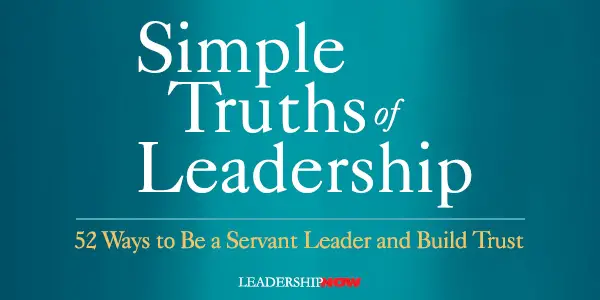
COMMON sense never seems to be common practice. To address this problem, Ken Blanchard and Randy Conley wrote Simple Truths of Leadership—52 of them. We wrote this book because we know a lot of people aren’t applying commonsense principles in the workplace. The format of the book is simple. On the left page, we identify a Simple Truth about servant leadership or trust. On the right page, we describe the puzzling lack of the use of the concept and briefly explain why it is important. The final element is a call to action for readers—“Making Common Sense Common Practice”—where we break down the concept into ideas that leaders can easily apply on the job. Some of the more memorable truths are: #1: Servant leadership is the best way to achieve both great results and great relationships. #5: The key to developing people is to catch them doing something right. #7: When people are off track, don’t reprimand them—redirect them. #9: Effective servant leaders realize they have to use different strokes for different folks. #12: Create autonomy through boundaries. #13: You get from people what you expect. #23: Servant leaders love feedback. #30: Someone must make the first move to extend trust. Leaders go first. #33: Fear is the enemy of trust. #41: #Trust is always trending. Doing the right thing never goes out of style. #44: The most important part of leadership is what happens when you’re not there. #48: Building trust is a journey, not a destination. #50: Apologizing is not necessarily an admission of guilt, but it is an admission of responsibility. The only truth that I think needs further explanation is #46: “People don’t resist change; they resist being controlled.” It’s true. If people feel controlled, they will resist. And their prescription is spot on: “It is important that they know the reasons the change is needed and the anticipated advantage of effectively implementing it.” Absolutely. People are more likely to change when they have faith in the promised outcome—the why. It is interesting, though, as studies have demonstrated, people who have had life-threatening heart conditions, when told that they need to change their lifestyle and eating habits, don’t. In his book Change or Die, Alan Deutschman tells us that Edward Miller of John Hopkins University has reported that if you “look at people after coronary-artery bypass grafting two years later, ninety percent of them have not changed their lifestyle.” They would rather die than change even though they are fully aware of the stakes. Perhaps the Simple Truth should be, “People are likely to resist change when they don’t know the why of the change.” The problem, of course, is that with all 52 of the rules, we know these things intellectually, but making them a part of how we lead is difficult because it requires some introspection and intentional forethought. And then action. You know, change. That often seems harder than the status quo. Or, we begin to make the change but tire of the effort. Nevertheless, we all benefit by reviewing these truths and, better yet, discussing them with our peers and co-workers. We can’t fix what we don’t think about. And we can use the support of others. These 52 Simple Truths will help us to move in the right direction. 
Posted by Michael McKinney at 07:56 AM
02.03.22

Leading Thoughts for February 3, 2022
IDEAS shared have the power to expand perspectives, change thinking, and move lives. Here are two ideas for the curious mind to engage with: Manfred Kets de Vries on developing emotional intelligence: “Certain kinds of learning can’t be rushed; they have to be approached one step at a time. This is particularly true of becoming more emotionally attuned. To acquire this kind of knowledge, there are two secrets. The first is to have patience; the second is to be patient! Acquiring higher emotional intelligence—that is, gaining a better understanding of the psychodynamics of human behavior—is never instantaneous. Becoming more psychologically minded requires not only time, but also persistence. Patience and persistence can move mountains. They are the keys to becoming more emotionally astute.” Source: The Leader on the Couch: A Clinical Approach to Changing People & Organisations John Hagel III, John Seely Brown, and Lang Davison on the importance of serendipity: “We need serendipitous encounters with people because of the importance of the ideas that these people carry with them and the connections they have. People carry tacit knowledge. You can’t learn brain surgery just from a text. Nor can you learn how to make tasty homebrew without watching someone else carry out the process. In both cases, you’ve got to stand next to someone who already knows and learn by doing. Tacit knowledge exists only in people’s heads. As edges arise ever more quickly, all of us must not only find the people who carry the new knowledge but get to know them well enough (and provide them with sufficient reciprocal value) that they’re comfortable trying to share it with us.” Source: The Power of Pull: How Small Moves, Smartly Made, Can Set Big Things in Motion Look for these ideas every Thursday on the Leading Blog. Find more ideas on the LeadingThoughts index.
Posted by Michael McKinney at 10:55 AM
02.01.22

First Look: Leadership Books for February 2022Here's a look at some of the best leadership books to be released in February 2022. Be sure to check out the other great titles being offered this month.
Everybody has regrets, Daniel H. Pink explains in The Power of Regret. They’re a universal and healthy part of being human. And understanding how regret works can help us make smarter decisions, perform better at work and school, and bring greater meaning to our lives. Drawing on research in social psychology, neuroscience, and biology, Pink debunks the myth of the “no regrets” philosophy of life. And using the largest sampling of American attitudes about regret ever conducted as well as his own World Regret Survey—which has collected regrets from more than 15,000 people in 105 countries—he lays out the four core regrets that each of us has. These deep regrets offer compelling insights into how we live and how we can find a better path forward.
Leadership legend and bestselling author Ken Blanchard and trust expert and thought leader Randy Conley present this carefully curated collection of fifty-two essential leadership principles that are easy to implement and practice. Effective leadership is an influence process where leaders implement everyday, commonsense approaches that help people and organizations thrive. Yet somehow, many of these fundamental principles are still missing from most workplaces. In Simple Truths of Leadership, legendary servant leadership expert Ken Blanchard, whose books have sold millions of copies worldwide, and his colleague Randy Conley, known and recognized for his many years of thought leadership and expertise in the field of trust, share fifty-two Simple Truths about leadership that will help leaders everywhere make commonsense leadership common practice.
Human beings are born to connect―but in today’s increasingly polarized world, we’re losing sight of the importance of building and maintaining professional relationships. And that’s bad for business. In Bridge the Gap, two prominent Fortune 500 coaches explore how your biology and biography define and refine your behavior in relationships where you struggle to connect. Focusing on personal responsibility and awareness, meta-cognition, and curiosity, they provide a reliable and replicable framework to enhance open communication. And they illuminate the inner workings of the human brain and mind, and how they impact the way you connect, communicate, and collaborate.
From impromptu elevator pitches to full-board presentations, sales and marketing professionals face an “audience” daily―often with make-or-break consequences. As the person delivering the performance, you need to know you have a great script and are able to maintain composure throughout. In Pitch Like Hollywood, we learn how to up our game substantiall ―no matter what business we’re in―by incorporating elements of a classic Hollywood pitch: driving emotion, piquing curiosity, and ultimately winning over decision makers with powerful persuasion and performance. They take us on an insider’s tour of the entire process, from defining the fundamentals to designing effective presentation strategies to overcoming stage fright.
You've shed antiquated systems and processes. You went all-in on digital. Your teams settled into new, often better, ways of doing things. But did your organization change enough to stay competitive in the post-pandemic world? Did you fully leverage the once-in-a-lifetime opportunity to leap forward and grow stronger? Are you shaping the new environment to your advantage? If not, it's not too late to learn from the best. New York Times #1 bestselling author Keith Ferrazzi, along with coauthors Kian Gohar and Noel Weyrich, shows leaders how to shape their organizations and practices to remain competitive in a new, post-pandemic context.
Today, PayPal’s founders and earliest employees are considered the technology industry’s most powerful network. Since leaving PayPal, they have formed, funded, and advised the leading companies of our era, including Tesla, Facebook, YouTube, SpaceX, Yelp, Palantir, and LinkedIn, among many others. As a group, they have driven twenty-first-century innovation and entrepreneurship. Their names stir passions; they’re as controversial as they are admired. In building what became one of the world’s foremost companies, they faced bruising competition, internal strife, the emergence of widespread online fraud, and the devastating dot-com bust of the 2000s. Their success was anything but certain. In The Founders, award-winning author and biographer Jimmy Soni explores PayPal’s turbulent early days. With hundreds of interviews and unprecedented access to thousands of pages of internal material, he shows how the seeds of so much of what shapes our world today—fast-scaling digital start-ups, cashless currency concepts, mobile money transfer—were planted two decades ago. He also reveals the stories of countless individuals who were left out of the front-page features and banner headlines but who were central to PayPal’s success.
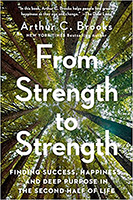 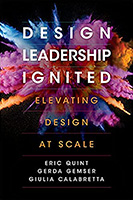 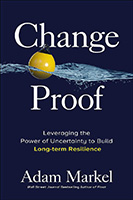
 Build your leadership library with these specials on over 28 titles. All titles are at least 40% off the list price and are available only in limited quantities. “He that loves a book will never want a faithful friend, a wholesome counselor, a cheerful companion, an effectual comforter. By study, by reading, by thinking, one may innocently divert and pleasantly entertain himself, as in all weathers, as in all fortunes.” — Isaac Barrow
Posted by Michael McKinney at 12:08 AM
|
BUILD YOUR KNOWLEDGE


How to Do Your Start-Up Right STRAIGHT TALK FOR START-UPS 
Grow Your Leadership Skills NEW AND UPCOMING LEADERSHIP BOOKS 
Leadership Minute BITE-SIZE CONCEPTS YOU CAN CHEW ON 
Classic Leadership Books BOOKS TO READ BEFORE YOU LEAD |
|